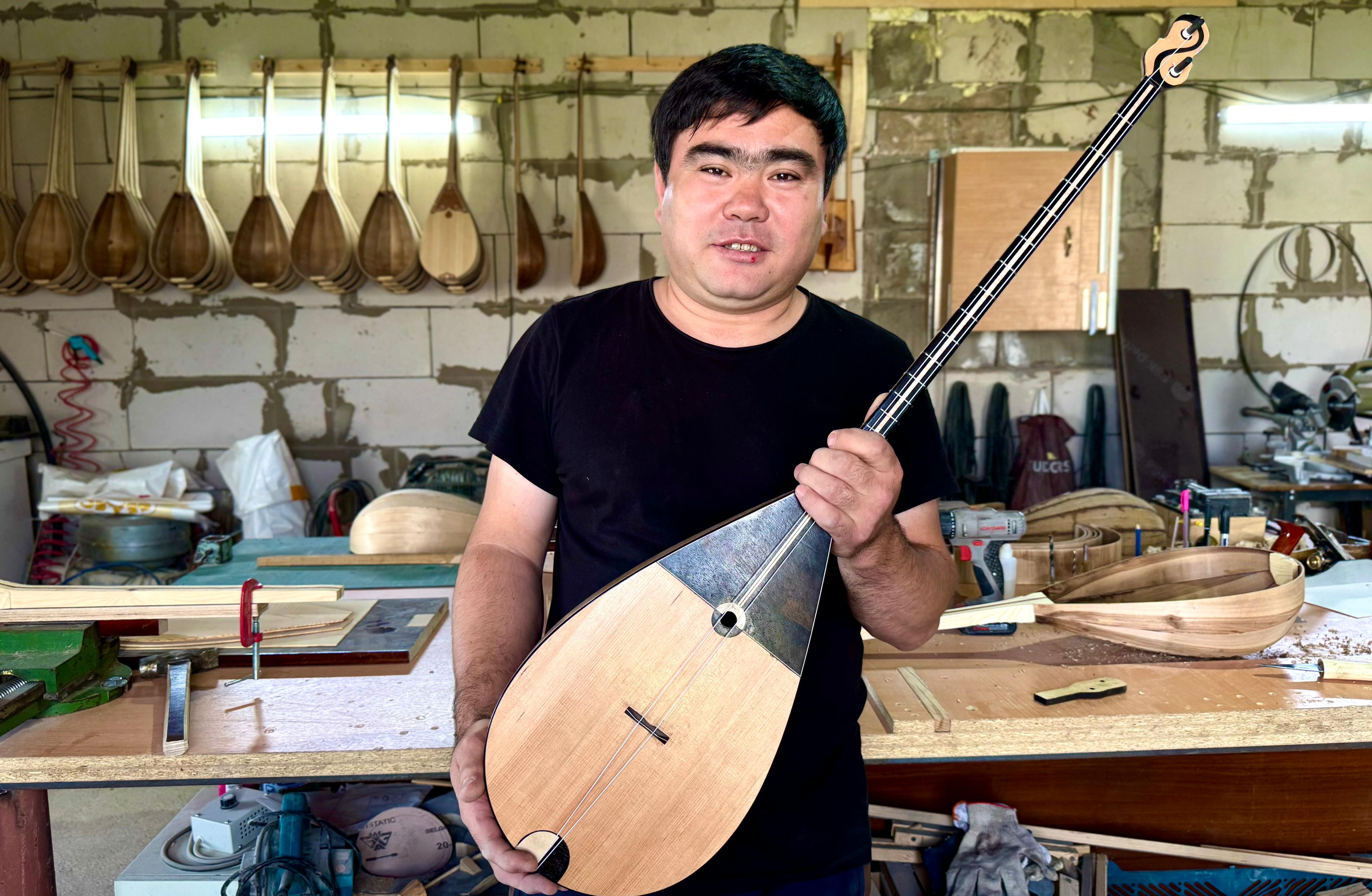
“The dombyra is the Kazakh people’s own symbol, their national brand.” On 13 June 2018, by decree of the First President of Kazakhstan Nursultan Nazarbayev, National Dombyra Day was officially instituted. To mark the occasion, representatives of the "Otandastar Qory" interviewed compatriot Ular Khozhayuly, exploring the secrets of crafting the sacred Kazakh instrument – the dombyra.
— We are delighted to meet you today. Could you tell us a little about yourself?
— I was born on 28 February 1986 in the village of Shagyntogai, Tarbagatai County, Xinjiang, China. After primary school I moved to Kuitun – the centre of the Kazakh‑populated area – to study at a school with Kazakh‑language classes, taught by Kazakh teachers. Having finished college, I returned to my homeland in 2023.
— How long have you been making dombyras, and how did you take up the craft?
— I have done it professionally for almost twenty years; the interest began in childhood.
— Were there craftsmen in your family?
— Yes, my father was a craftsman too. As a child I loved working with wood: whenever I saw a thick, dry log, I would pick up an axe or adze and start carving. In school shop class I made my first plywood dombyra – it is still displayed in the school museum.
— Did you have a mentor?
— While at Abai College I heard of teacher Zholaushi Abylkasymuly; his dombyras are owned by renowned kuyshi in China. In 2017 I met Erbol Aben, who works in a non‑traditional, violin‑inspired manner, carefully adjusting the soundboard thickness to produce baritone and tenor zones.
— What kinds of wood do you use?
— Readily available, high‑quality woods: birch, spruce and mahogany. I use spruce for the neck, birch for the body and shämshät for the soundboard.
— How long does it take to build one dombyra?
— About three to four days. After gluing, the body stays under pressure for three to four hours. Fitting neck to body takes the longest; a special jig speeds this up. In 2013 I built a device with dual‑side temperature sensors: the outer and inner temperature of the wood must be equal, otherwise the body can warp or crack.
— What factors shape the sound quality?
— The key is properly dried, quality timber and precise assembly: the joint between soundboard and neck, thickness variations, fret placement – everything affects tone. A dombyra is an acoustic system, not just a piece of wood.
— Which styles of dombyra do you make?
— Mainly instruments for kui performance. There are dombyras for the shertpe and tokpe styles, seven Arqa‑type dombyras and the western “zhumyr” (rounded) dombyra, which Akhmet Zhubanov standardised.
— How should a dombyra be cared for?
— Store it in a dry place with stable temperature (about 35 % humidity). Do not leave it in direct sun or extreme cold – the wood may crack and the sound will suffer. Like the human body, the dombyra needs care.
— Are you training apprentices now?
— Yes. I had apprentices in China and continue teaching today; 70–80 % of dombyra makers in China are my students.
— What should be done to develop dombyra making further?
— Promotion is vital. Fortunately, young people are interested, and dombyra is now taught in schools – a major boost for our national art.
— The first Sunday of July is Dombyra Day nationwide. What are your wishes for the holiday?
— It was my dream to take part in such a celebration; being in Astana for it is a great joy. I thank the kuyshi who honour the dombyra and the leaders who established this day. Kazakh and dombyra are inseparable – this is the nation’s holiday.
— “A true Kazakh is not the Kazakh, A true Kazakh is - dombyra!”
— Yes, it is our national treasure. May this be a heartfelt national celebration, not a one‑off campaign. I wish everyone happiness and prosperity! Long live Kazakhstan!
Interviewer: Aidana Kerimbayeva
More details: Otandastar Channel.